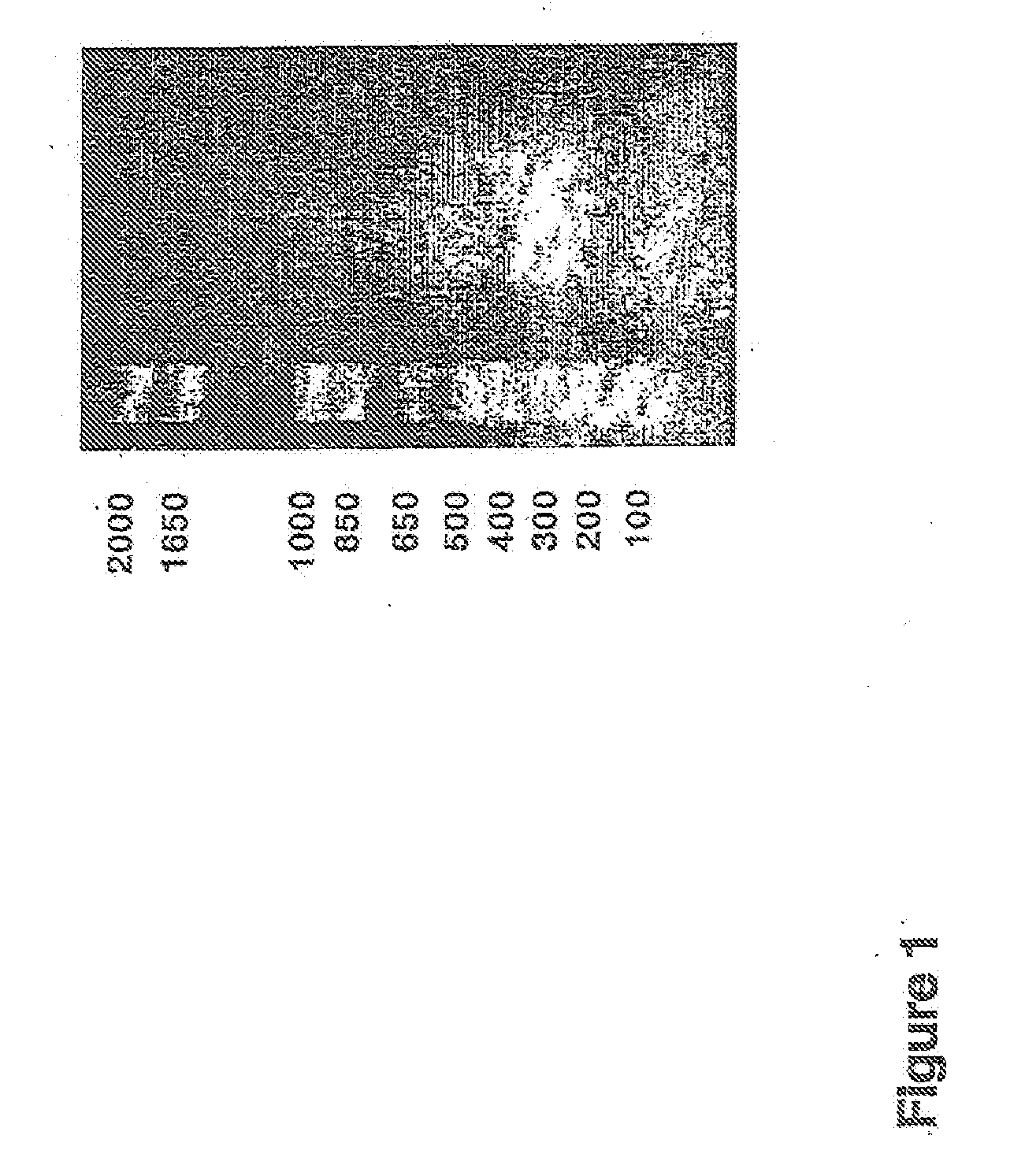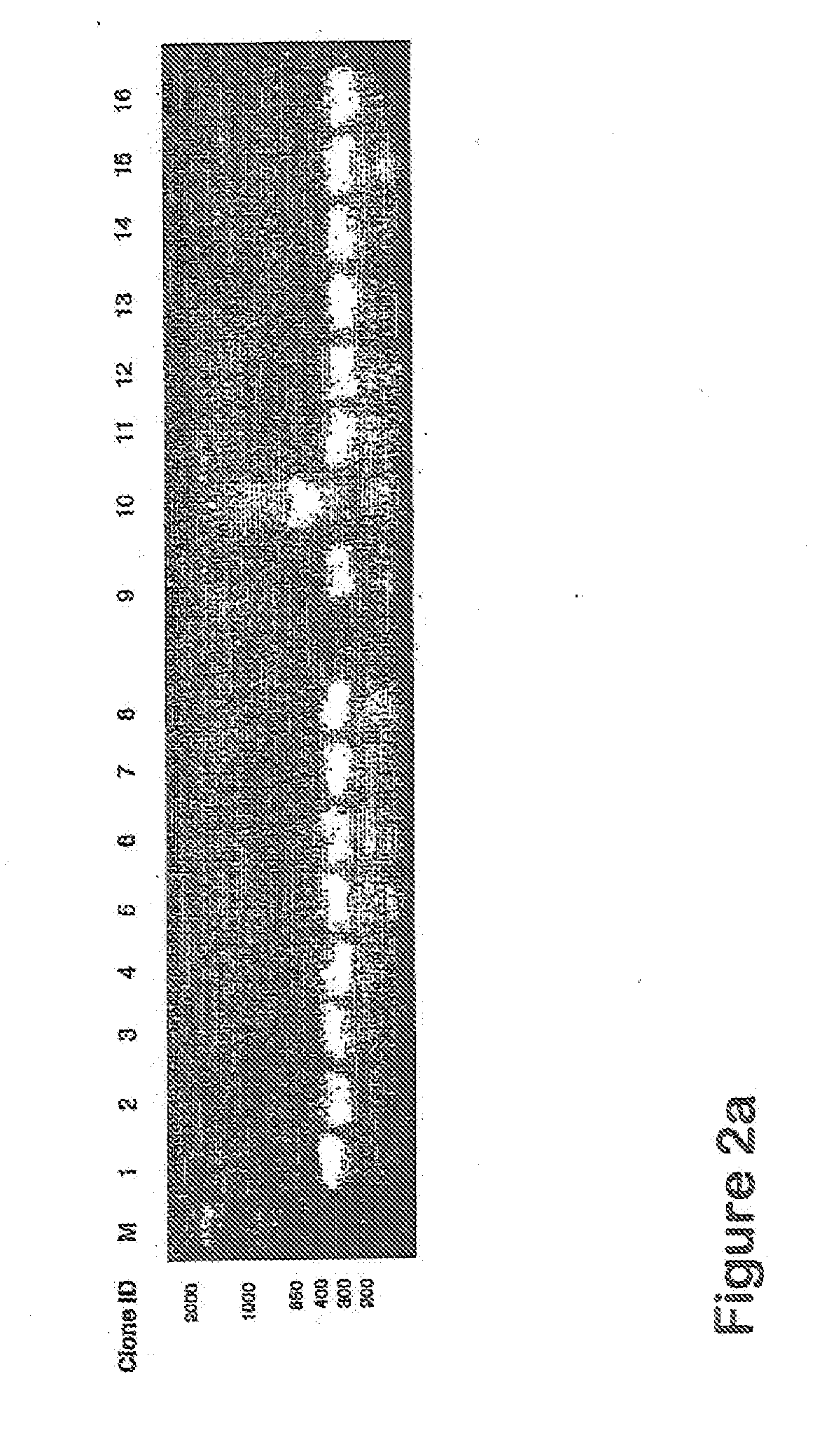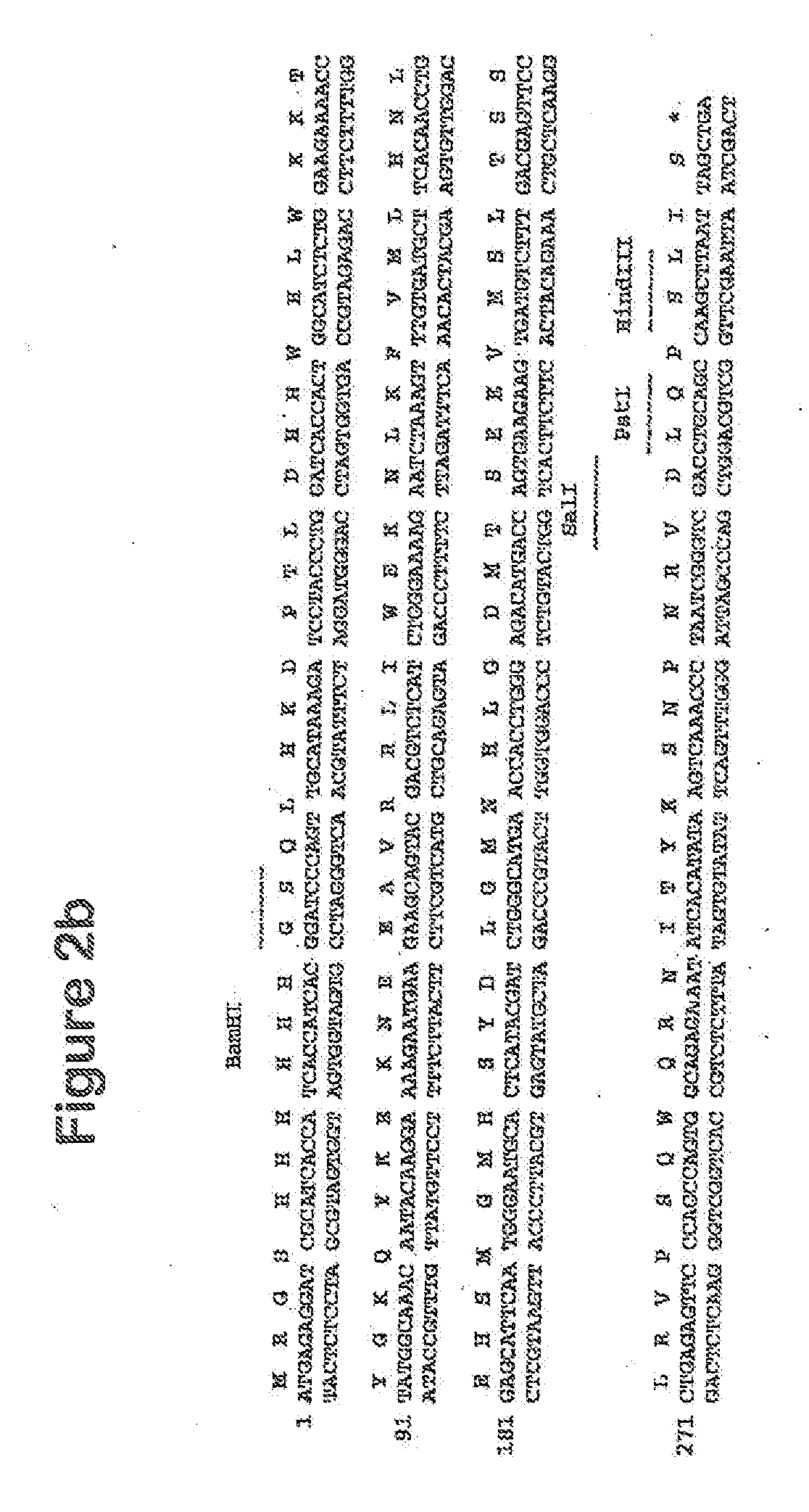Peptide and uses thereof
a technology of propeptide and peptide, which is applied in the field of peptide, can solve the problems of degradation of extracellular matrix, difficult generation of specific small molecule inhibitors of cathepsins, and doubtful clinical application of such compounds, and achieves the effect of potent specific inhibitory action on activity
- Summary
- Abstract
- Description
- Claims
- Application Information
AI Technical Summary
Benefits of technology
Problems solved by technology
Method used
Image
Examples
examples
Materials and Methods
Cloning and Expression of CatSPP
[0126]The human CatSPP, residues 17-113, was amplified from a human spleen cDNA library (Origene) using primers CATSPPF (5′ TTT TTTGGATCCCAGTTGCATAAAGATCCTAC) and CATSPPR (5′ TTTTTTGTCGACCCGATTAGGGTTTGA) containing BamHI and Sail restriction sites respectively (as underlined). The expected band of 330 bp was visualised by agarose electrophoresis. This band was gel purified and cloned using BamHI and SalI into pQE30 (Qiagen), which incorporated ah N terminal hexahistdine tag for downstream manipulations; Positive clones were identified by colony PCR and sequence aligned to accession number M90696. A single verified clone was used in subsequent experiments.
Cloning and Expression of CatSPP-Fc
[0127]For cloning of the CatSPP into the pRSET-Fc vector, the DNA sequence was amplified using primers CATSPPFCF (5′ TTTTTTGGATCCCAGTTGCATAAA GAT) and CATSPPFCR (5′ TTTTTTGTCGACTATCCGATTAGGGTT), again with BamHI and SalI restriction enzyme sites ...
PUM
 Login to View More
Login to View More Abstract
Description
Claims
Application Information
 Login to View More
Login to View More - R&D
- Intellectual Property
- Life Sciences
- Materials
- Tech Scout
- Unparalleled Data Quality
- Higher Quality Content
- 60% Fewer Hallucinations
Browse by: Latest US Patents, China's latest patents, Technical Efficacy Thesaurus, Application Domain, Technology Topic, Popular Technical Reports.
© 2025 PatSnap. All rights reserved.Legal|Privacy policy|Modern Slavery Act Transparency Statement|Sitemap|About US| Contact US: help@patsnap.com



